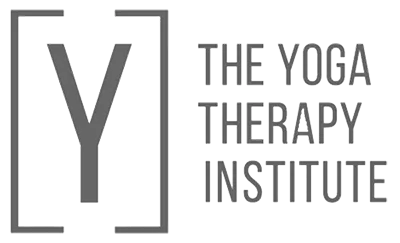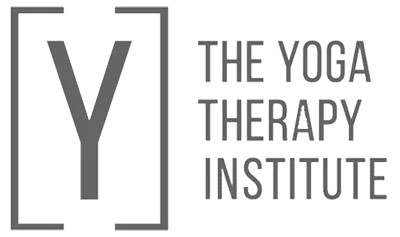How can I integrate Yoga Therapy in my professional life?
Without many people noticing it, Yoga Therapy is slowly becoming part of everyone’s life.
People used to sign up for yoga classes because they wanted to get more flexible, or they wanted to relax. Now, almost everyone we know is looking at yoga and gradually asking about Yoga Therapy to find solutions for their physical and psychological health issues.

Yoga Therapy itself was developed at the start of the 20th century as an answer to the needs of the patients of Sri T. Krishnamacharya. Krishnamacharya, the father of modern Yoga Therapy, was an Ayurvedic doctor and a Yoga scholar who worked with his patients and students during the period in his life which is called “the householder” stage.
At the time, in India, those who chose the path of Yoga were required to fulfil a timeframe in their lives in which they had to marry, have kids and work to maintain their family until the kids left home. This was called the “house-holder” years. Only then, they could continue their spiritual journey, sharing their knowledge with their pupils as their legacy, before preparing for death.
Even though he came from a privileged background, Krishnamacharya started a family and he “got a job”.
And “get a job” is what we all need to do, in order to maintain ourselves and our families, and to experience that sense of accomplishment and self-realisation that we all need, not only for us but as a valuable member of our community.
Yoga work
Sometimes in the world of yoga, there is an underlying feeling of shame for asking how on Earth can we make a living from teaching. Many of us followed this path in the first place for altruistic reasons: we are the givers, who wish to heal ourselves and others, to share and connect with a world that needs taking care of, by people like us.
Shortly after that, you realise you have to pay the rent. Plus, there are millions of other yoga teachers out there, trying to do exactly the same as you. All of them with their 200 hour Yoga Alliance–registered diplomas.
So, you scramble to run around from one class to another for a very small amount of money, keep on “subbing” in fear that you might not be included in your yoga community, teach your neighbours for peanuts, and combine your yoga teaching side-job with a proper one that pays the bills.
You wish you could do more than this, give up your day job and become a full-time yoga teacher. But this only brings stress and the calculator doesn’t seem to add more numbers.
“Yoga burnout” is a new term that is commonly being used as a way to describe the soul-destroying mix of intense physical “giving” work with the worries of surviving.
So, what can I do?
As in any profession which is over-subscribed, only the best will make it.
The students who learned with Krishnamacharya (BKS Iyengar, Desikachar, Indra Mohan, AG Mohan, Pattabhi Jois and their own pupils) studied for decades!
It is a symptom of our times to believe that with a 4-week “intense” yoga teaching course we are going to be ready to help people with their health issues and bring them happiness and well-being. Looking at it that way it doesn’t sound quite right.
The intentions are good, but you have to put in the hard work.
This is where accredited Yoga Therapy studies make a difference. They require a minimum of 800 to 1000 hours of study, including hundreds of hours of practice which are required in order to achieve your certification.
They include biomedical studies, taught by medical professionals and clinical psychologists, and professional rules of safe practice. This means that some medical insurances in countries such as the USA, the UK, and India, are already including Yoga Therapy in their insurance coverage.
And this is only the start.

Working as a Yoga Therapist
I have been working as a full-time Yoga Therapist in the Netherlands for nearly 15 years, with hundreds of clients and making a wonderful living which allows me to live in a very nice house in Amsterdam, go on holidays as I wish, and pay my bills without a struggle. I have not needed another job for all these years, and I have met many Yoga Therapists in the USA and London who have been very successful in this rewarding profession.
One of the reasons is because, admittedly, there are not many qualified Yoga Therapists around, even though the demand keeps on growing. Not many students are willing to put in the time and the effort to study the hours. The financial and life investment might also seem scary.
However, the funny thing is, you will be better off financially specialising and developing your private clients than teaching mass-group classes, being paid as little at 20 euros per class, or 50 euros if you are a senior teacher. Let alone the self-satisfaction of doing something that truly expands your abilities and skills. If you are prepared, well-trained, and motivated, you will see not only your business grow, but yourself.
Word of mouth
“Your Yoga Therapy clients will grow as fast as word-of-mouth about your work will allow it.”
People may come to you because you have a nice website, but at the end of the day, they will only recommend you to their friends and family if they have had a respectful, safe, effective and friendly experience under your care.
The magic formula includes all of the above, and this is something that you will learn as your ABC’s in the Yoga Therapy Foundation Course 100-Hours.
Apart from this, we need to remember that, like in any other job, you have to be able to promote yourself, develop a likeable website, to be open to connecting with others and to show your enthusiasm and transmit your love for what you do.
Once your clients make an appointment, you will receive them in a warm, clean, airy, welcoming studio, supplied with props, tea and a smile. You have to be ready… because you don’t know what your client or student might bring with them.
Your knowledge, studies and hard-working experience – which you work on every day of your life – will make sure that your practice is above all, safe, and effectively adapted to your student’s individual needs, so you are prepared for whatever may come.
Your intention
During your studies, you will learn how to take care of your student, and how to take care of yourself. Like children, students will learn from example. You are, after all, a human being, and not some show-biz Instagram Goddess or God who is always healthy and looking fabulous.
If I was to share a secret about my work, this would be the one. Stay down to earth, familiar, friendly, caring, human, and keep on learning.
Inspired by this idea of human-ness, I always tell my clients that there are no gurus, and that “we work together”.
When I first met Sarah, a young woman diagnosed with breast cancer who came for Yoga Therapy sessions, I told her that I would work “with her” through her journey, whatever it might bring.
Of course, the doctors and health professionals at her hospital did the job that needed to be done, but I was there with her to wrap her up in restorative positions, to massage her feet when nothing else was possible, to make sure that we did not do any weight-bearing exercises that could cause oedema when she was recovering after surgery, and to send her encouraging what’s apps when she was going for check-ups.
Sarah recommended me to other friends and family, including her mother-in-law! From my work with her, I grew my experience with many other breast cancer patients, which has become one of the areas I specialise in.

What if I don’t want to be a Yoga Therapist?
If you don’t wish to work as a full-time Yoga Therapist, you can easily integrate your Yoga Therapy knowledge and practice into other branches and professions, for instance in your work as a coach, doctor, physiotherapist, full-time mum or dad, social worker, and naturally, as a yoga teacher.
You will start to see your students in a different light, as human beings and not as figures who need to achieve the perfect Asana.
Your yoga practice will transform, and your relationship with Yoga will become deeper and closer to who you really are.
These are not just words. This is, in my experience, the way things are going. It is the natural progression of teaching yoga, and a necessary one.
We all need it
Every day I receive excited emails from students, telling me that so many people are approaching them to experience Yoga Therapy! This is not a coincidence. People are asking for it because they need it.
The world needs knowledgeable teachers, with years of training and learning, with a dedication to their students and determination to keep this practice grounded, safe, real and adapted to human beings. After all, it was said that Krishnamacharya believed that “Yoga has to be adapted to the individual, not the individual to Yoga.”
This is Yoga Therapy, and you can make it happen.









